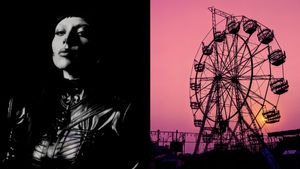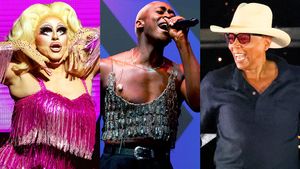About 10 million Americans -- or 4.6 percent of the U.S. population -- identified as LGBT in 2016.
A new Gallup poll released the findings, which show a rise in 1.75 million people since 2012. To determine these numbers, pollsters conducted interviews with random sample of 1.6 million U.S. adults (over age 18) for the past five years, asking, "Do you, personally, identify as lesbian, gay, bisexual or transgender?" Nearly 50,000 responded in the affirmative.
The report claimed self-identification is only one way to measure the nation's LGBT population. It noted how "direct assessments of same-sex sexual behavior or attraction yield very different (and often larger) population estimates."
Here are some of the other significant findings. Young people born between 1980-1998 were twice as likely as other age demographics to identify as LGBT. Although they account for only 32 percent of the adult population, millennials comprised 58 percent of the total number of self-identified LGBT Americans. Gallup attributes this to a decline in stigma.
"It's likely that millennials are the first generation in the U.S. to grow up in an environment where social acceptance of the LGBT community markedly increased," the report noted. "This may be an important factor in explaining their greater willingness to identify as LGBT."
"They may not have experienced the levels of discrimination and stigma experienced by their older counterparts," it added. "The perceived risks associated with publicly identifying as LGBT might also be lower in millennials than among other generations."
In addition, women (4.4 percent) were more likely than men (3.7 percent) to identify as LGBT; the former group also accounted for a greater increase since 2012.
In terms of race and ethnicity, polled demographics were white (3.6 percent), black (4.6 percent), Hispanic (5.4 percent), Asian (4.9 percent), and other (6.3 percent). Asian-Americans, which tallied 3.5 percent in 2012, saw the largest increase in numbers. According to Gallup, this means that 40 percent of self-identified LGBT adults are people of color, an increase from 33 percent in 2012.
Gallup measured other factors. For example, LGBT adults in the survey were more likely be non-religious (56 percent) than straight people (32 percent). The poll also examined education attainment and annual household income.
"In a span of only five years, the demographic composition of Americans who identify as LGBT has markedly changed," the report stated. "It has become larger, younger, more female and less religious. These demographic traits are of interest to a wide range of constituencies."
These constituencies range from the National Institute of Health, which analyzes health disparities in vulnerable communities, to corporate America, which has courted LGBT customers through boycotts like in North Carolina.
See the full report on Gallup.com.


















































































